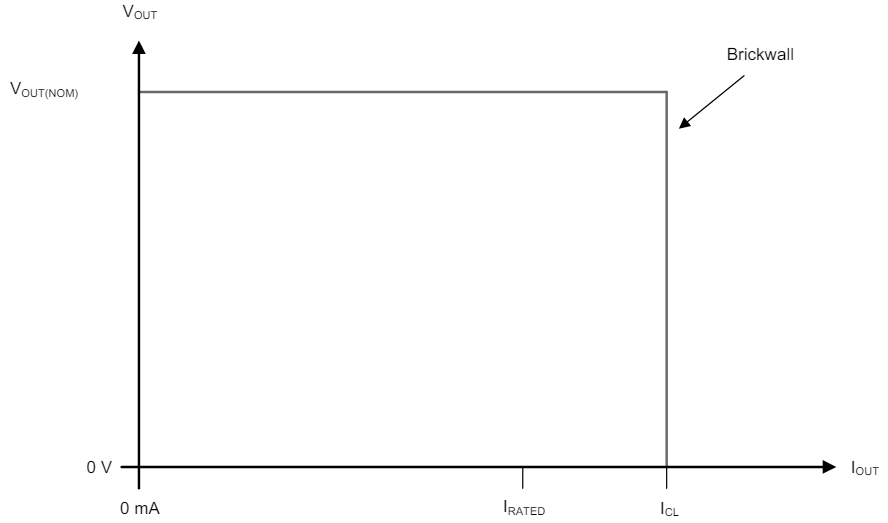SBVS453 May 2024 TLV770
PRODUCTION DATA
- 1
- 1 Features
- 2 Applications
- 3 Description
- 4 Pin Configuration and Functions
- 5 Specifications
- 6 Detailed Description
- 7 Application and Implementation
- 8 Device and Documentation Support
- 9 Revision History
- 10Mechanical, Packaging, and Orderable Information
Package Options
Refer to the PDF data sheet for device specific package drawings
Mechanical Data (Package|Pins)
- DBV|5
- DQN|4
Thermal pad, mechanical data (Package|Pins)
- DQN|4
Orderable Information
6.3.3 Brick-Wall Current Limit
The device has an internal current limit circuit that protects the device during overcurrent or shorting conditions. The current-limit circuit, as shown in Figure 6-1, is a brick-wall scheme. When the device is in current limit, the device sources the output current limit (ICL) and the output voltage is unregulated. In this scenario, the output voltage depends on the load impedance.
 Figure 6-1 Brick-Wall Current Limit
Scheme
Figure 6-1 Brick-Wall Current Limit
SchemeDuring a current-limit event, the potential for high power dissipation exists because of the elevated current level and increased input-to-output differential voltage (VIN – VOUT). If the device heats enough, the device enters thermal shutdown. If the current-limit condition is not removed when the device turns back on after cooling, the device reenters thermal shutdown. This cycle continues until the current-limit condition is removed. The device survives this fault, but repeatedly operating in this mode degrades long-term reliability.